Jindřich Chalupecký: Umění dnes (1966) [Czech]
Filed under book | Tags: · abstract art, art, art criticism, art history, art theory, avant-garde, happening, kinetic art, op art, pop art, theatre
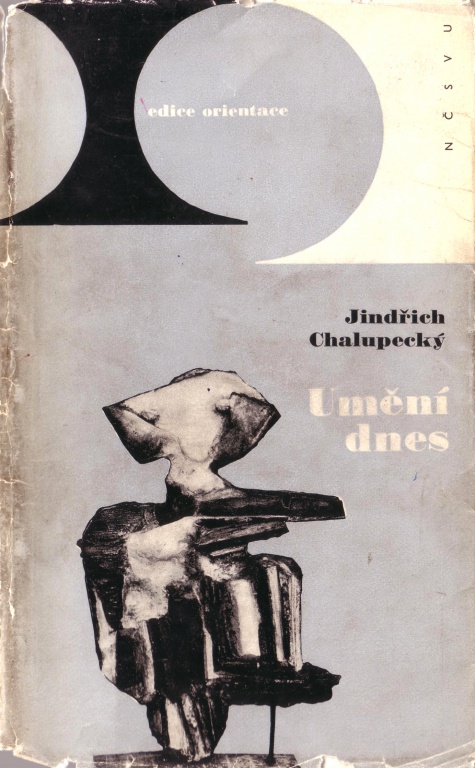
A collection of essays on modern art by the eminent Czech art critic and art historian.
“Podoba výtvarného umění se od konce 2. světové války prudce měnila. Ve čtyřicátých letech nastoupily nové nefigurativní směry, označované jako lyrická abstrakce, akční malba, materiálové umění, a nabyly v desetiletí 1950-1960 takového významu, že se abstrakce zdála jedinou možností moderního umění. Ale od začátku šedesátých let se uplatňuje řada tendencí docela jiných a mnohdy překvapivých: pop art, nová figurace, kinetismus, vizualismus…
Tento vývoj byl u nás sledován neúplně a zkresleně. Autor se proto snaží v řadě esejů, které jsou jádrem knihy, vylíčit dramatickou situaci, do níž dospělo moderní umění, a kriticky ukázat původ a smysl tohoto složitého dění. Těmto esejům předesílá informativní přehled vývoje avantgardního umění od abstraktního expresionismu, dada a surrealismu až k nejposlednějším experimentům, jako jsou happenings, v nichž se stupňuje působení uměleckého díla až do divadelních forem, a events, dematerializujících naopak umělecké dílo až v pouhý pomysl. V syntetickém závěru konečně ukazuje sociální a historický smysl současného umění. 64 ilustrací text dokumentuje.” (from the cover)
Publisher Nakladatelství československých výtvarných umělců, Prague, 1966
Volume 3 of Monoskop Unlimited Edition Series
263 pages
PDF (89 MB, no OCR)
For more from Chalupecký see Monoskop wiki.
Karl Toepfer: Empire of Ecstasy: Nudity and Movement in German Body Culture, 1910-1935 (1997)
Filed under book | Tags: · 1910s, 1920s, 1930s, avant-garde, ballet, bauhaus, body, dance, expressionism, germany, photography, theatre, weimar republic
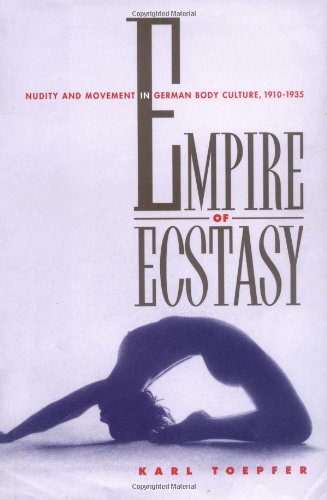
Empire of Ecstasy offers an interpretation of the explosion of German body culture between the two wars—nudism and nude dancing, gymnastics and dance training, dance photography and criticism, and diverse genres of performance from solo dancing to mass movement choirs. Karl Toepfer presents this dynamic subject as a vital and historically unique construction of “modern identity.”
The modern body, radiating freedom and power, appeared to Weimar artists and intelligentsia to be the source of a transgressive energy, as well as the sign and manifestation of powerful, mysterious “inner” conditions. Toepfer shows how this view of the modern body sought to extend the aesthetic experience beyond the boundaries imposed by rationalized life and to transcend these limits in search of ecstasy. With the help of much unpublished or long-forgotten archival material (including many little-known photographs), he investigates the process of constructing an “empire” of appropriative impulses toward ecstasy.
Toepfer presents the work of such well-known figures as Rudolf Laban, Mary Wigman, and Oskar Schlemmer, along with less-known but equally fascinating body culture practitioners. His book is certain to become required reading for historians of dance, body culture, and modernism.
Publisher University of California Press, 1997
ISBN 0520918274, 9780520918276
422 pages
PDF’d HTML, HTML (from the publisher)
See also Mel Gordon, Voluptuous Panic: The Erotic World of Weimar Berlin, 2000–.
Comment (0)ReD (Revue Devětsilu): modern culture monthly (1927-1931) [Czech]
Filed under magazine | Tags: · architecture, art, art theory, avant-garde, bauhaus, constructivism, czechoslovakia, dada, design, film, graphic design, literature, photography, poetry, psychoanalysis, radio, surrealism, theatre
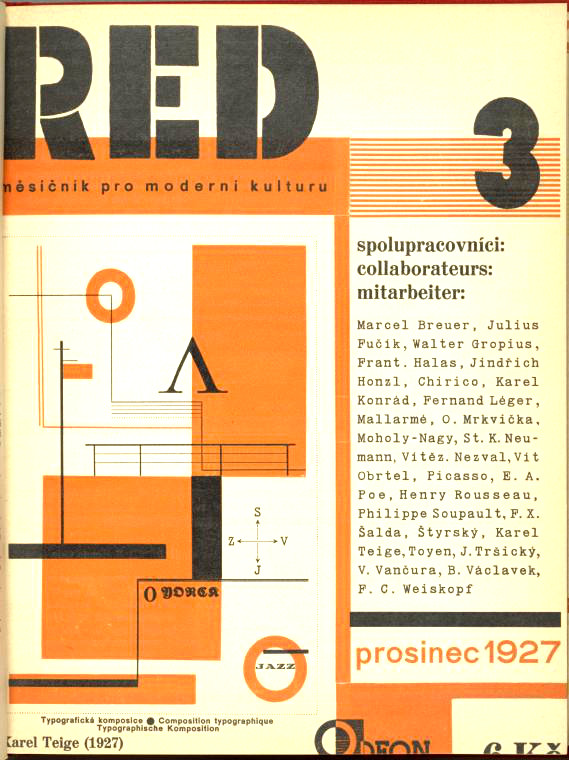
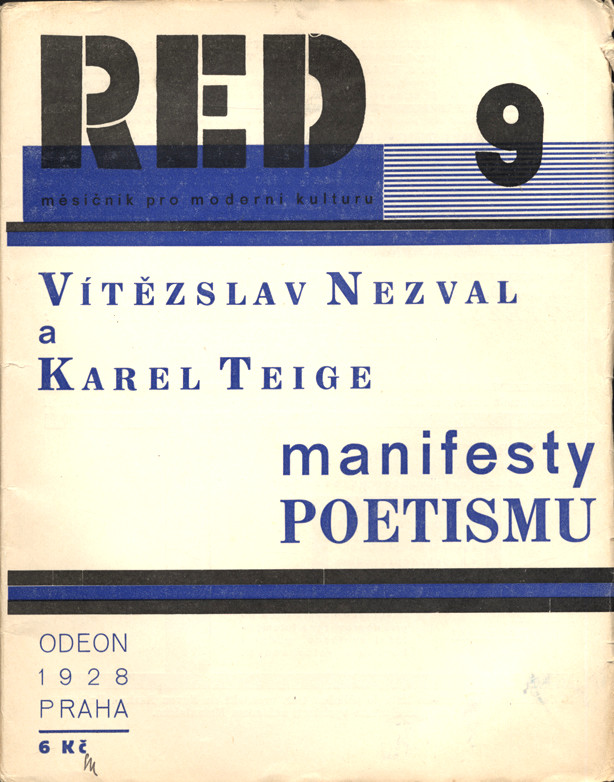
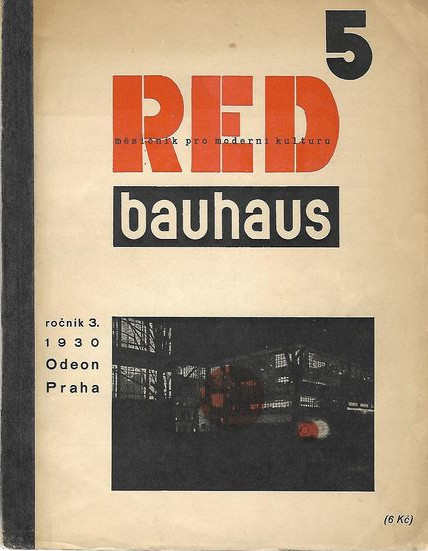
ReD (měsíčník pro moderní kulturu / Revue internationale illustrée de l’activité contemporaine / Internationale Monatsschrift für moderne Gestaltung) was an art magazine published by members of the Czech avant-garde art collective Devětsil.
Thirty numbers were published, with the special issues on the Russian avant-garde, Bauhaus, and photography/film/typography.
Several manifestos appeared in the journal: Toyen and Jindřich Štyrský’s Artificielisme (1:1, 1927), Karel Teige’s second Poetism manifesto [Manifest Poetismu] (1:9, 1928), and the Left Front [Levá fronta]’s founding manifesto (3:2, 1929).
Edited and designed by Karel Teige
Publisher Odeon – Jan Fromek, Prague
via NYPL Digital Library
Each volume in a single PDF (low resolution):
Volume I, 1927-1928 (10 issues, 360 pages)
Volume II, 1928-1929 (10 issues, 324 pages)
Volume III, 1929-1931 (10 issues, 315 pages)
Selected issues in separate PDFs:
The Russian Issue (1:2, Nov 1927)
Foto Film Typo Issue (2:8, Apr 1929)
The Bauhaus Issue (3:5, Feb 1930, partly in German)
JPG pages (search in page annotations):
View online
See also Devětsil: Revoluční sborník (1922), edited by Jaroslav Seifert and Karel Teige, in Czech.
Comment (1)
